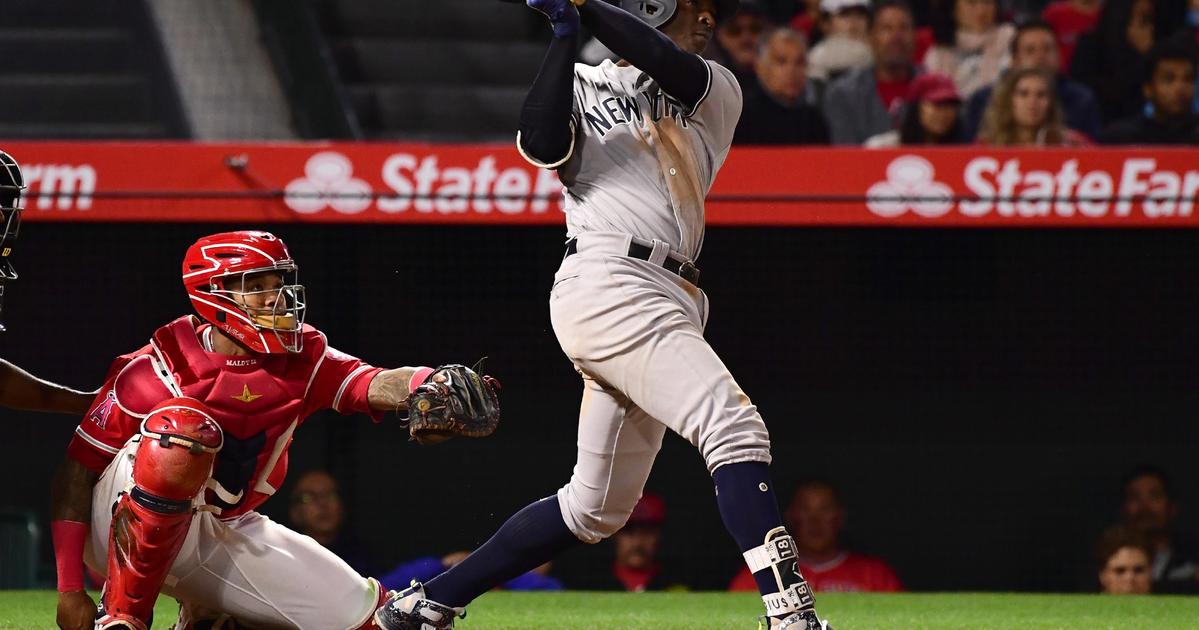(Photo credit: USA Today Sports/Jayne Kamin-Oncea)
When camping, a camper must make sure they properly tend to the campfire. Campers cannot leave the fire unattended, or else everything will catch fire and turn the lovely forest into a charcoal desert. Campers must also extinguish their campfires properly. Campers do this by pouring cold water onto the fire, then shoveling and moving around the burned leftovers for a bit, and then you pour on more cold water.
During the first month of the season, Didi Gregorius has scorched pitchers like wildfire. By May 3rd, he had a.333/.418/.712 slash line and 10 HRs, resulting in a 190 wRC+. But during the last week and a half, pitchers have doused Didi Gregorius' and properly extinguished the flames of his cracking start. Since May 4th, he has one hit in his last 31 plate appearances and has only reached base two other times through walks. The warmth and comfort from Sir Didi’s hot start has disappeared and turned into a damp disappointment.
An adjustment from pitchers
Even while struggling, Gregorious has continued to hit the ball hard. Through to the 3rd of May, he had 38.5% hard-hit rate. Since May 4th, he has made hard contact in 39.3% of his batted balls. But he has also made almost as much soft contact; his soft contact rate has jumped up from 18.8% to 32.1% in the same time span.
The first notable difference for Didi has been something that he cannot control: the pitches he sees. Before May 4th, 58.8% of the 501 pitches he saw were fastball type pitches, 24.87% were off-speed pitches, and 15.37% were changeups. Since May 4th, he saw fastballs 72.55% fastballs, only 12.75% breaking pitches, and an additional 12.75% changeups.
But before the slump, he actually made better contact against fastballs, recording a .440 xwOBA against heaters and only a .291 xwOBA against breaking balls. But even though he has seen more fastballs, since the beginning of the slump, he has an .231 xwOBA against fastballs and an .165 xwOBA against breaking balls. While his troubles against breaking balls are interesting, his struggles against the fastball are more alarming, especially since he usually hits the fastball well.
Now, here is a breakdown, by series, of his fastball percentage:
Both the Indians (who the Yankees played first played on May 4th) and the Red Sox relied heavily on the fastball against Gregorious, and he did not responded well. Gregorius had better exit velocity against the Indians. During the series, he had four hard-hit balls, and all came off of fastballs. But all of those batted balls resulted in either a flare, burner or poor pop-up inducing contact. Against the Red Sox, he only had one batted ball with an exit velocity over 95 mph, and that was a poorly topped grounder to the pitcher.
Against the A’s so far, he has had five batted balls with an exit velocity above 95 mph, and four of them have come against fastballs. But just like he did against Cleveland, he has had poor quality contact, as only one of those four batted balls resulted in solid contact. Recently, when he has seen more fastballs, Gregorious has kept hitting the ball hard, but he is not making enough quality contact.
Pulling into the Short Porch
Here are a a couple of spray charts to look at. Take your time in examining them.
Didi Gregorius, Home and Away Spray Chart, 29-03 to 03-05 (Note: He played 15 away games, but I still kept the venue at Yankee Stadium to make things easier to look at.)
Didi Gregorius Home Spray Chart, 29-03 to 03-05
Didi has hit nine of his ten home runs at home. For six of his ten homers, he has had made barrel quality contact, or contact with a .500 AVG and a 1.500 SLG across the league since Statcast came online.
He hit five of his six barreled home runs at home. His other four home runs came from solid contact quality, and all of those home runs went into the short porch in right. While Didi has power, he has benefitted from pulling balls into the short porch in right at Yankee Stadium. But the early season success from taking advantage of the short porch may have made him rethink his approach.
After having an excellent April, Gregorius has pulled the ball more. Before May 4th, he pulled 45.8% of his contacts, but that percentage has fallen to 28.6% since he entered his slump. He has also hit significantly fewer line drives (24.7% through May 3rd, 10.7% since) resulting in him hitting more fly balls and grounders. Gregorius may have changed his approach to try to hit more home runs, and it has thrown both his timing and his ability to make quality contact.
Didi might be experiencing a slump. His strikeout and walk percentages have, after all, have both dropped by 5.1% and 7.3% respectively during his slump, which could indicate that Didi hasn't changed his approach to hitting more home runs. If that is the case, Gregorius will more than likely break out of his slump. But if he has changed his approach, then he might need to revert to his April approach. He has enough power to do damage against opposing pitchers, but if he is focusing on hitting home runs, he has become a significantly worse hitter by doing so.
Thank you to Baseball Savant and FanGraphs for the statistics.
Do you think Didi is in a slump? Let us know in the comments below!
Explore new topics and discover content that's right for you!
MLB The Show



